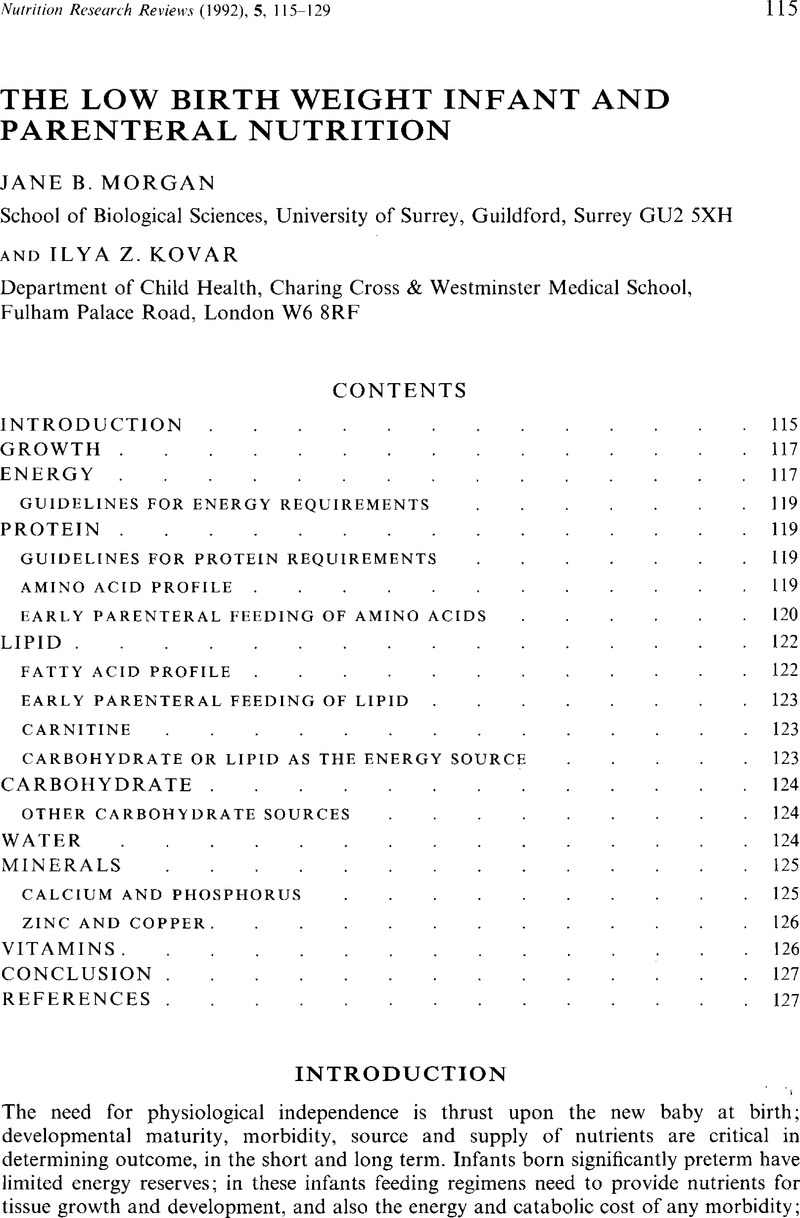Crossref Citations
This article has been cited by the following publications. This list is generated based on data provided by Crossref.
Hultin, M
Müllertz, A
Zundel, M A
Olivecrona, G
Hansen, T T
Deckelbaum, R J
Carpentier, Y A
and
Olivecrona, T
1994.
Metabolism of emulsions containing medium- and long-chain triglycerides or interesterified triglycerides.
Journal of Lipid Research,
Vol. 35,
Issue. 10,
p.
1850.
Forsyth, J. S.
and
Crighton, A.
1995.
Low birthweight infants and total parenteral nutrition immediately after birth. I. Energy expenditure and respiratory quotient of ventilated and non-ventilated infants..
Archives of Disease in Childhood - Fetal and Neonatal Edition,
Vol. 73,
Issue. 1,
p.
F4.
Lewandowski, Adam J.
Lazdam, Merzaka
Davis, Esther
Kylintireas, Ilias
Diesch, Jonathan
Francis, Jane
Neubauer, Stefan
Singhal, Atul
Lucas, Alan
Kelly, Brenda
and
Leeson, Paul
2011.
Short-Term Exposure to Exogenous Lipids in Premature Infants and Long-Term Changes in Aortic and Cardiac Function.
Arteriosclerosis, Thrombosis, and Vascular Biology,
Vol. 31,
Issue. 9,
p.
2125.
Chernenkov, Yu.V.
Bochkova, L.G.
Kadymova, I.I.
and
Kiselev, A.R.
2018.
Copper Concentration in the Blood Serum of Low Birth Weight Newborns.
Biomedical and Pharmacology Journal,
Vol. 11,
Issue. 4,
p.
1807.





